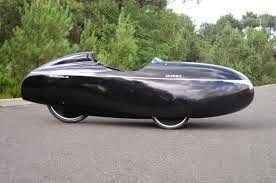End of February Update
In the middle of winter, manufacturers are
still working on their latest designs. There is a lot of interesting stuff to appear on the market.
Cycle JV Fenioux
For those looking for a hood for their
velomobile, CycleJV offers a hood for the Quest/Strada/Mango It is offered in
two versions, the first is made of fiberglass, weights 880g (31oz) and costs €450 for white and an extra
€40 for colors. the second is made of
carbon fiber, weights 750g (26oz) and
costs €550 for white and an extra €40 for colors. Shipping is an extra €20.
The company is offering a new hatch cover for
the Quest/Strada/Mango and Quest XS equipped with two sizes of windscreen. The hatch is a bit more open than the
original foam hatch cover, it is equipped with a NACA duct and is made of fiberglass
but a carbon version is in the plans.
The hatch cover is currently only available in white. The price is set at €259 (not sure if it
includes the VAT and delivery timeframe is 3 weeks. This may be a good option for those riders
who need to wear an approved helmet for competitions as most if not all hoods
on the market significantly restrict movement of the head with a helmet.
The Mulsanne velomobile is finally going
into production, the first shell is expected to weight 9.5kg and is expected at
the beginning of April. Meanwhile, the
LeMans 002 is about to get on the road.
The newest version will see some improvements with a new boom
Katanga
Katanga is now offering a fully enclosed
chain for the WAW. The new feature will
certainly improve chain life and reduce the need for maintenance and cleaning.
Intercitybike
Daniel Fenn is very active these days
making the DF faster. After working on
the new hood, Daniel did more testing of the new wheel pants and provided more
information and pictures. We learned that
the pants are taped-on with hockey tape but it is not clear how long it will
take to install and remove. The current
version is very efficient but probably not suited for daily use; it is probably
something to take to the track or special race events. Daniel also indicated that he is working on a
tail extension for the DF to further improve the aerodynamic performance, I
guess his development lab is very active. Go Daniel!
Daniel is also looking for a female rider
to challenge the 12/24hr records in the new and improved DF… anyone
interested? Maybe he is looking at
challenging the men’s record himself.
A lot of riders are currently trying to
determine if the modified DF will be more efficient than the new Milan SL
MK3. I guess we’ll really find out when
the race season starts; as they say “When the green flag drops, the bullshit
stops!”.
Velomobile Club Of Great Britain
Following on the steps of the French group,
UK riders have formed the Velomobile Club Of Great Britain
on Facebook. Probably not as structured
as the French group who have legal status, we see the idea of velomobile clubs
moving ahead.
Meanwhile in France, in the French forum
people are discussing the impact of the new association on the current recumbent
cycling association and on the relationship and potential influence of local
velomobile vendors may have. I’m sure
things will settle down but some see it as desertion!






